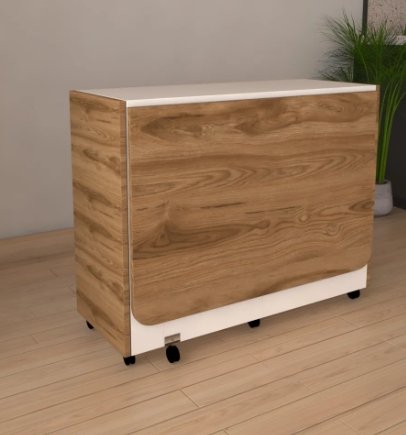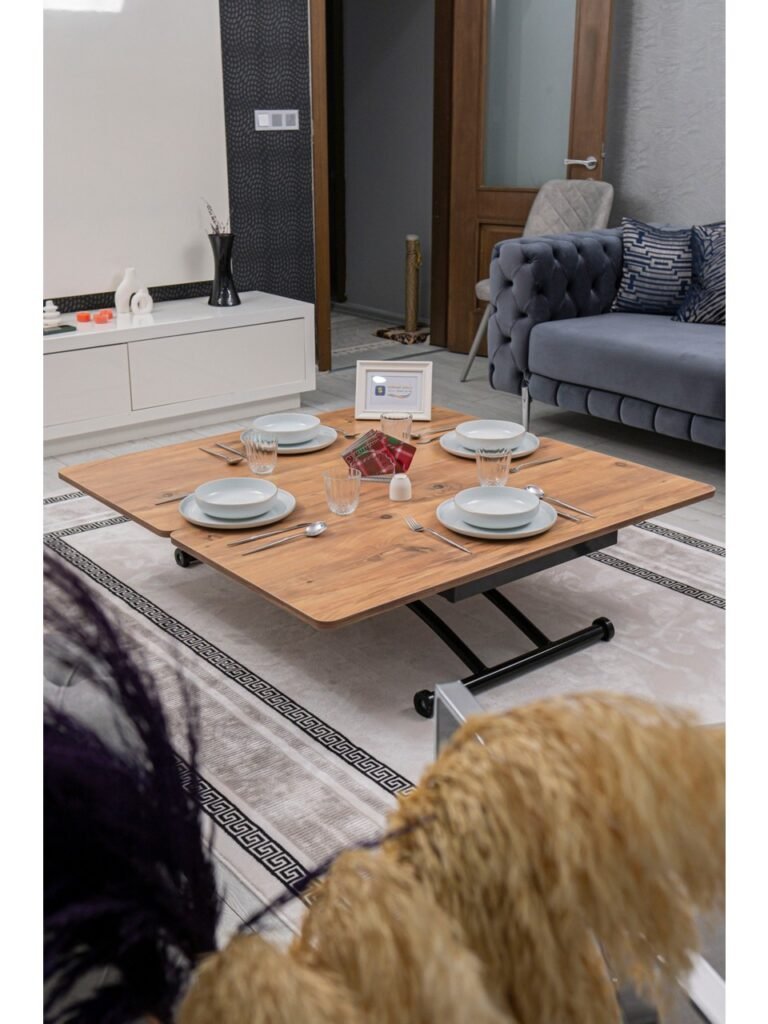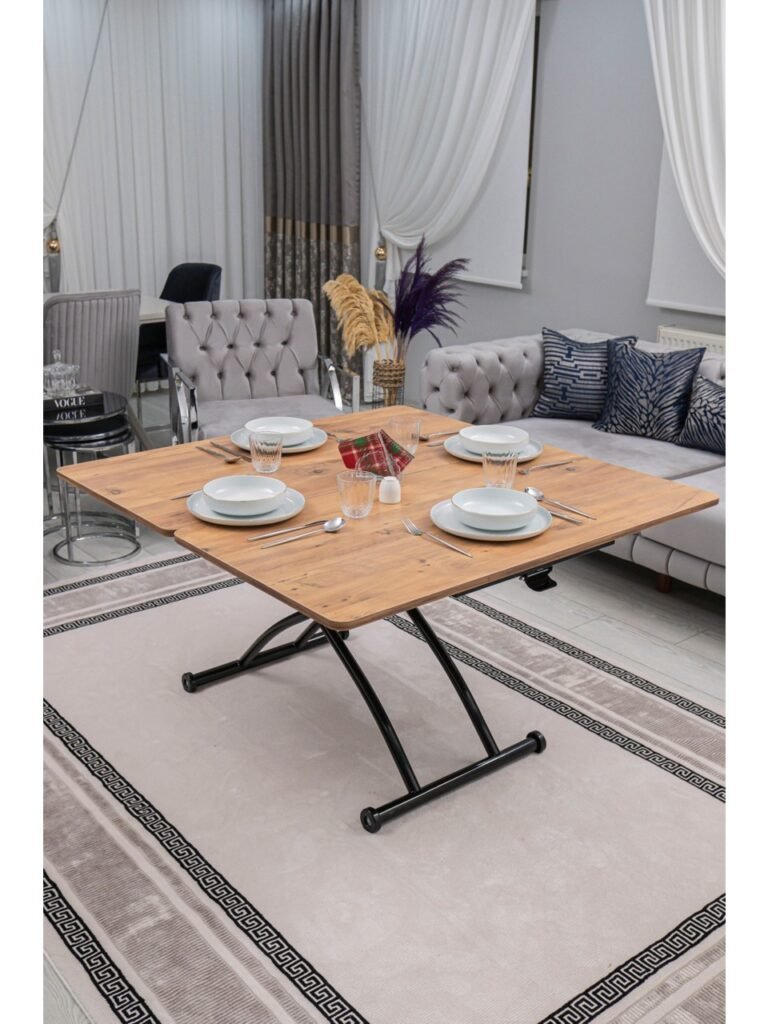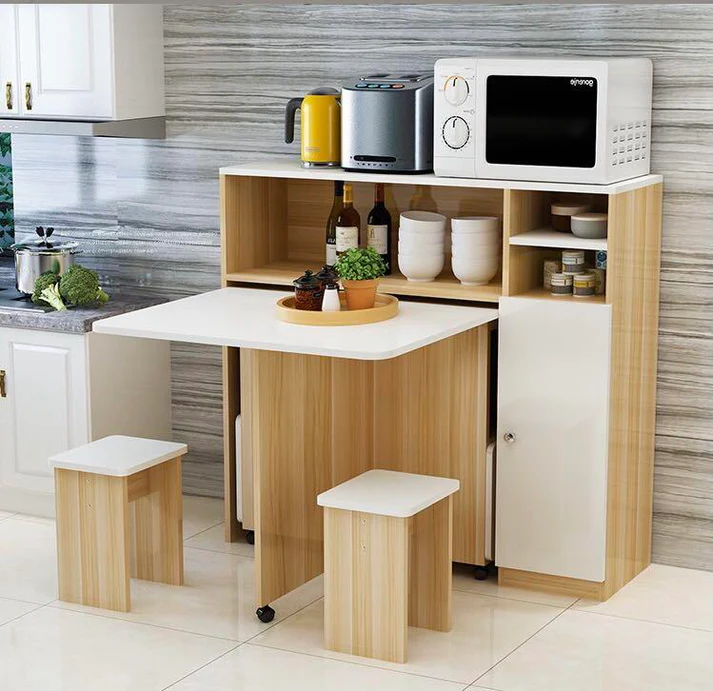When it comes to furnishing a home—especially in apartments or cozy urban settings—the dining area plays a key role in both functionality and style. One of the most debated topics among interior designers and homeowners alike is whether a folding dining table or a traditional one does a better job in saving space. In this article, we’ll explore both options in detail, break down their benefits and limitations, and answer frequently asked questions to help you make the most informed decision.
The Rise of Space-Saving Solutions
Compact living has inspired designers to rethink classical furniture. Today, space-saving solutions such as folding dining tables have taken center stage. Unlike traditional dining tables that occupy permanent floor space, folding tables can collapse or extend as needed. This versatility makes them an excellent candidate for multi-functional spaces, small apartments, or homes where every square foot matters.
By opting for a table that folds away when not in use, homeowners can quickly transform their dining area into a work desk, a play area, or even a temporary meeting space. This transformation not only saves space but also encourages a minimalist lifestyle where clever design meets practical function.
Understanding the Two Options
What Are Folding Dining Tables?
Folding dining tables come in various shapes and sizes—from compact, wall-mounted models to portable, free-standing designs. Their primary feature is mobility. These tables can be folded or collapsed within seconds, making them ideal for small rooms or for households that love versatility in layout. Some advanced models even offer adjustable height and built-in storage compartments for cutlery or condiments, contributing further to their space efficiency.
Pros:
- Space Efficiency: Perfect for small homes or apartments.
- Flexibility: Easy transformation of spaces.
- Portability: Can be moved and stored quickly.
- Modern Aesthetics: Often feature sleek, contemporary design elements.
Cons:
- Durability Concerns: May not match the sturdiness of traditional tables over time.
- Limited Seating: Folding tables often have size restrictions that reduce seating capacity.
- Stability Issues: In some designs, the table may wobble if not used on a flat surface.
What Are Traditional Dining Tables?
Traditional dining tables—crafted from wood, metal, or glass—are designed to be permanent fixtures in a dining room. They offer a sense of stability and elegance that can serve as the centerpiece of a home’s interior décor. Built for durability, these tables often feature robust construction and timeless designs that fit seamlessly into various interior styles.
Pros:
- Robust Construction: Typically more durable and stable.
- Aesthetic Versatility: Can serve as the focal point for formal dining spaces.
- Higher Seating Capacity: Often accommodates more guests with a larger surface area.
- Timeless Appeal: Classic designs that never go out of style.
Cons:
- Space Consumption: Can dominate smaller rooms and restrict movement.
- Inflexibility: Not designed for reconfiguration or quick transformation of space.
- Placement Limitations: Often require a dedicated dining area, making them unsuitable for multi-functional spaces.
Space-Saving Comparison: Folding vs. Traditional
When evaluating which type of dining table saves more space, a few key aspects come into play:
- Storage and Mobility: Folding tables have a clear advantage when it comes to storage. They can be folded and tucked away, allowing the space to be used for different purposes at different times. This feature is particularly beneficial in homes with limited square footage where every inch is valuable.
- Multi-Functionality: Traditional tables are fixed and usually more cumbersome to move. In contrast, the adaptability of folding tables allows them to effectively serve multiple roles—dining area, homework station, or even a temporary workspace in an open-plan living area.
- Installation and Disassembly: The ease with which a folding table can be collapsed or expanded means that users can quickly adapt their space to meet immediate needs. Younger families, students, or professionals living in urban environments are often drawn to this level of flexibility.
Comparison Table:
| Aspect | Folding Dining Tables | Traditional Dining Tables |
|---|---|---|
| Space Efficiency | High – Easily folded and stored | Low – Permanent occupancy of space |
| Flexibility | Excellent – Multi-use and movable | Limited – Fixed design |
| Durability | Moderate – May show signs of wear sooner | High – Built to last |
| Seating Capacity | Often restricted | Generally higher |
| Design Aesthetic | Modern and minimalistic | Classic and elegant |
In essence, if your primary concern is maximizing available space and embracing a dynamic lifestyle, choosing a folding dining table could be your best bet. However, if you value long-term sturdiness and a fixed aesthetic centerpiece for your dining area, a traditional table might be the more suitable option.
Design Considerations for Modern Spaces
Choosing the right dining table requires you to consider your current living conditions and your future needs. For homes with ever-changing layouts, open floor plans, or rooms that serve multiple functions, a folding dining table is not only practical but also aligns with contemporary lifestyle trends. On the other hand, those who frequently entertain or have a dedicated dining space might lean towards the enduring charm and reliability of traditional dining tables.
Materials and Build Quality
- Materials: Folding tables often use lightweight metals, engineered wood, or tempered glass. Traditional tables might be made from solid wood or high-grade composite materials.
- Ease of Use: Consider whether the table requires lifting or if it can be folded down with minimal force. Ergonomic design is a key factor in ensuring everyday usability.
- Maintenance: Traditional tables might need more upkeep with polish or varnish, while folding tables keep things simple with contemporary, stain-resistant finishes.
Incorporating Q&A for Deeper Insights
Is a folding dining table as sturdy as a traditional one?
While many modern folding tables are engineered to be sturdy, they may not always offer the same level of stability as traditional dining tables. It’s important to check user reviews and specifications regarding load capacity and materials before making a purchase. For everyday dining and light use, the differences might be negligible, but for hosting larger gatherings, a traditional table’s robust construction could be preferable.
What space can I save with a folding table?
The amount of space saved depends largely on the size and design of the folding table. In a small apartment, even a table that folds down to a 2–3-foot profile can free up significant movement area, which makes the room feel larger. Many users report that the ability to quickly convert a dining area into an open space dramatically enhances the livability of a compact dwelling.
Can a folding dining table blend with my home decor?
Absolutely. Today’s folding tables are not just functional; they come in a variety of styles—from sleek, modern designs to those with a more traditional finish. With the right choice, a folding table can seamlessly integrate into your home décor, offering both style and practicality.
What should I consider when buying a space-saving dining table?
Key considerations include the table’s dimensions when open and closed, material quality, stability, ease of deployment, and overall design aesthetics. Assess how often you will need to transform the space and whether the table’s style matches your interior decor.
The Verdict: Which Table Saves More Space?
Ultimately, if saving space is your top priority, folding dining tables take the lead. Their ability to collapse and provide multi-functional use in compact areas makes them perfect for urban living where maximizing every inch counts. However, traditional dining tables are unmatched when it comes to long-term durability and seating capacity, making them ideal for established households with dedicated dining rooms.
When choosing between the two, think about your lifestyle, the frequency of hosting meals, and your overall interior design strategy. For a vibrant, evolving living space that adapts to your everyday needs, a folding table might be the innovation your home has been waiting for. Conversely, if stability, longevity, and a classic look are your main concerns, a traditional dining table could serve as a beautiful, steadfast centerpiece.
Beyond the Table: Enhancing Your Space
While selecting the right dining table is a critical aspect of home design, why stop there? Consider complementing your table choice with multi-functional furniture such as storage ottomans, modular sofas, or even wall-mounted shelves. Each piece can be strategically chosen to boost both aesthetic appeal and utility.
Embrace the dynamic freedom that innovative design offers. As urban living continues to evolve, the conversation about space-saving solutions is more important than ever. Whether you’re redecorating on a budget or planning a full-scale home makeover, always look for items that not only add beauty but also enhance functionality.
Maximizing Small Spaces with Folding Dining Table
Small living areas demand furniture that’s both functional and unobtrusive. Folding dining tables answer this…
Best Folding Dining Tables for Small Apartments
Top Folding Dining Table Trends: Space-Saving, Sustainable, and Stylish Choices for Modern Homes. In today’s…
Stylish & Practical: How to Choose the Perfect Folding Dining Table
In modern living spaces, where every square inch matters, choosing the right furniture often becomes…




